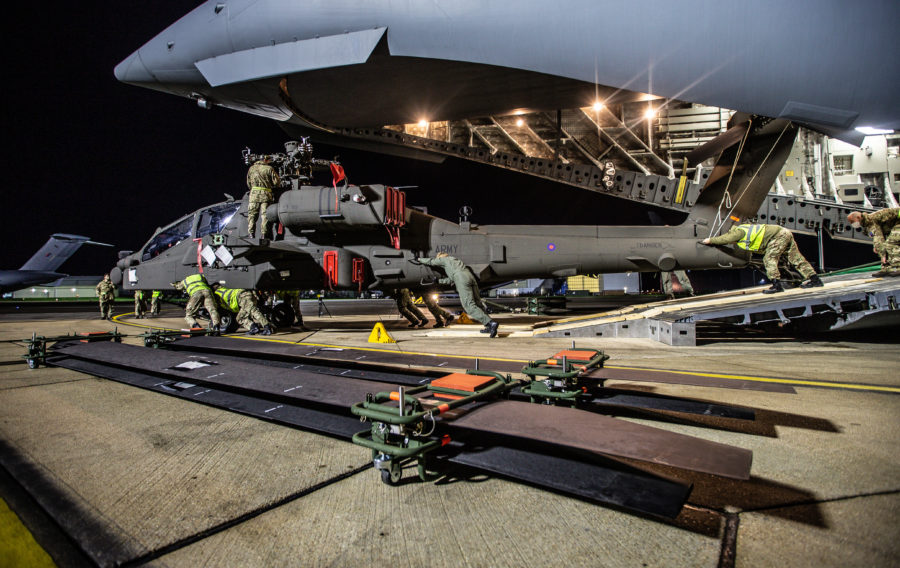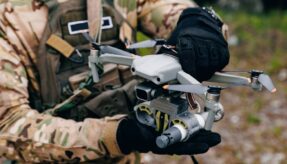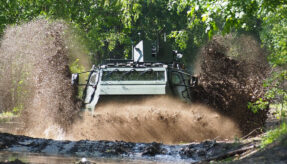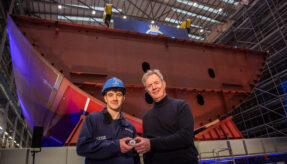
More than a dozen new AH-64E Apaches – one of the most advanced attack helicopters anywhere in the world – are undergoing test flights with the British Army.
The helicopters have improved sensors and lethality, upgraded weapons systems and heightened communications compared to their predecessor. Comparable to high-end super cars, the new Apaches also boast a top speed of 300kmh (186 mph).
They are able to detect 256 potential targets at once, prioritising the most urgent threats within seconds, up to a range of 16km (10 miles) away – a distance 57 times the length of HMS Queen Elizabeth or over twice the length of the Grand National course.
Wattisham Flying Station has taken delivery of 14 of the new aircraft, with 36 more due to arrive by the summer of 2024. British Army test flights are underway, with a booster to aerial capability anticipated early next year when they enter operational capability.
Defence Procurement Minister, Jeremy Quin, said: “There can be no doubt these impressive Apache helicopters will help the Army sustain its battle-winning capabilities in future operations.
“It’s great news that the long-term support for yet more cutting-edge technology will remain here in the UK, putting millions of pounds back into the British defence industry and supporting hundreds of jobs.”
A 20-year agreement has been signed with Boeing Defence UK to maintain and support this new fleet of impressive attack helicopters.
With £288 million confirmed for the first pricing period in place until July 2025, the agreement will create more than 200 jobs in the UK, including 165 for the Army Aviation Centre at Middle Wallop in Hampshire and 45 at Wattisham Flying Station in Suffolk.
The British Army has been utilising the world-leading Apache capability since 2005, with the attack helicopters seeing action in Iraq, Afghanistan and Libya.
The Deputy Chief of the General Staff, Lieutenant General Sir Chris Tickell KBE said: “I am delighted at the introduction of the 4th generation AH-64E into British Army service, signifying our commitment to investing in the right equipment for our people to compete and win against the threats facing the UK.
“Within Future Soldier, we committed to winning the deep battle so that the close battle is as anti-climactic as possible, thereby reducing the risk to our people. The AH-64E is a truly world-beating capability that will, alongside other capabilities we are introducing, ensure we succeed.”
The Long-Term Training and Support Service (LTTSS) will progressively take over from the initial support and conversion training provided by the US-Government under Foreign Military Sale interim arrangements.
The contract will cover aircraft design organisation services, maintenance, logistics support, plus pilot, maintainer and groundcrew training. Boeing already has more than 40 employees working alongside the Army Air Corps providing training for the Mk1 Apache at the Attack Helicopter Training School at Middle Wallop.
DE&S Director Helicopters, Keith Bethell, said: “Ensuring the new Apache AH-64E fleet is airworthy and ready to serve the British Army is essential, which is why we were delighted to negotiate a long-term training and support service with Boeing Defence UK as part of our Rotary Wing Enterprise involving the Front Line Commands, DE&S and Industry.
“Not only will it keep the Apaches in the best possible condition for deployment, it will provide expert training for pilots and ground crew while creating long-term, sustainable jobs for industry.”
The replacement of the MK1 with the AH-64E – built by Boeing and already in service with the US Army – was announced in 2016 as part of a $2.3 billion deal. This new model, which is now being flown in the UK, has improved sensors and avionics as well as greater performance that will enable the army to sustain its battle-winning capabilities in future operations.
This programme reinforces the ambition laid out in the Defence Command Paper and recent Future Soldier announcement to transform the Army into a more agile, integrated, lethal, expeditionary force, showing the Army’s investment in battle-winning technology.
image © Crown Copyright
If you would like to join our community and read more articles like this then please click here







